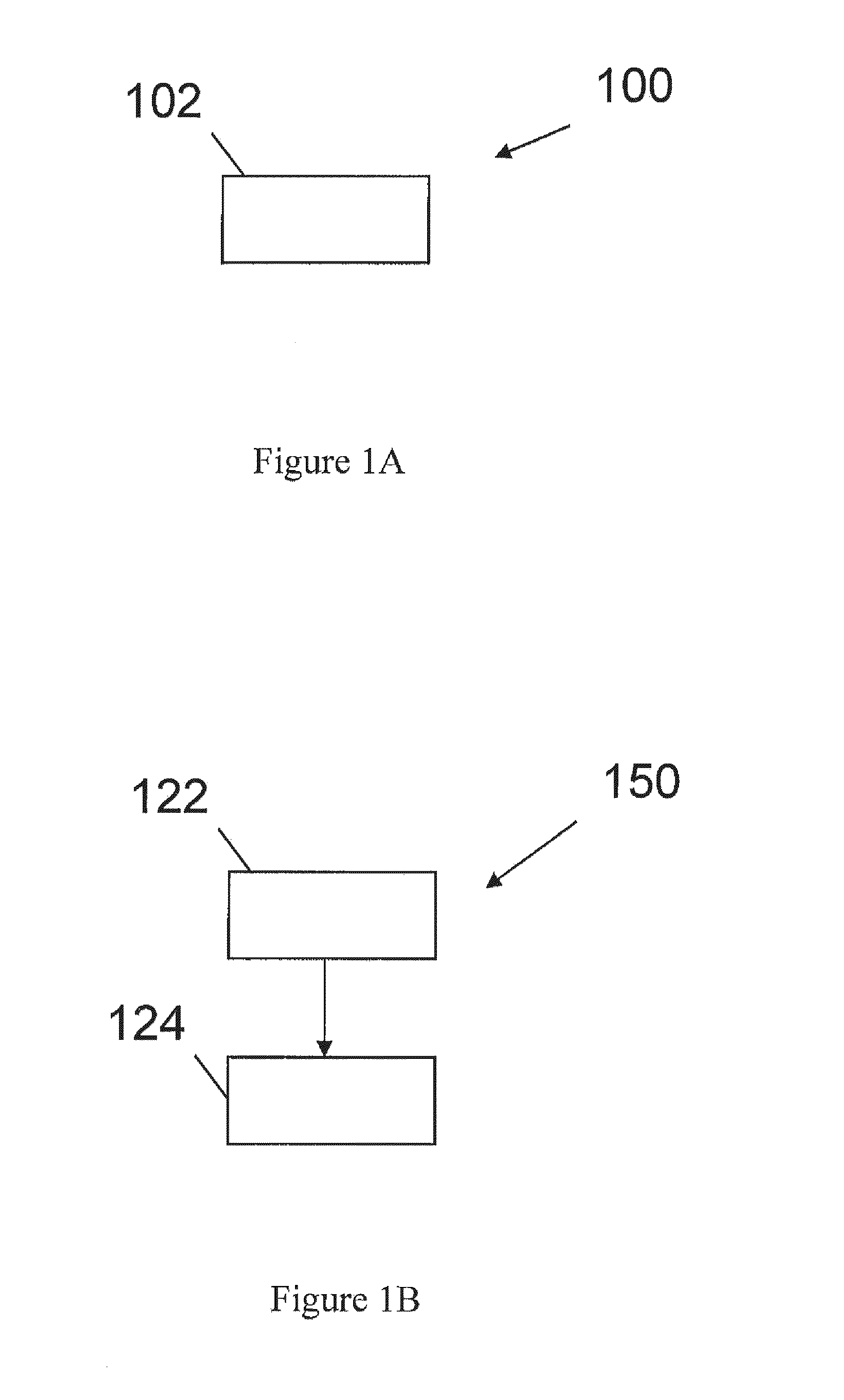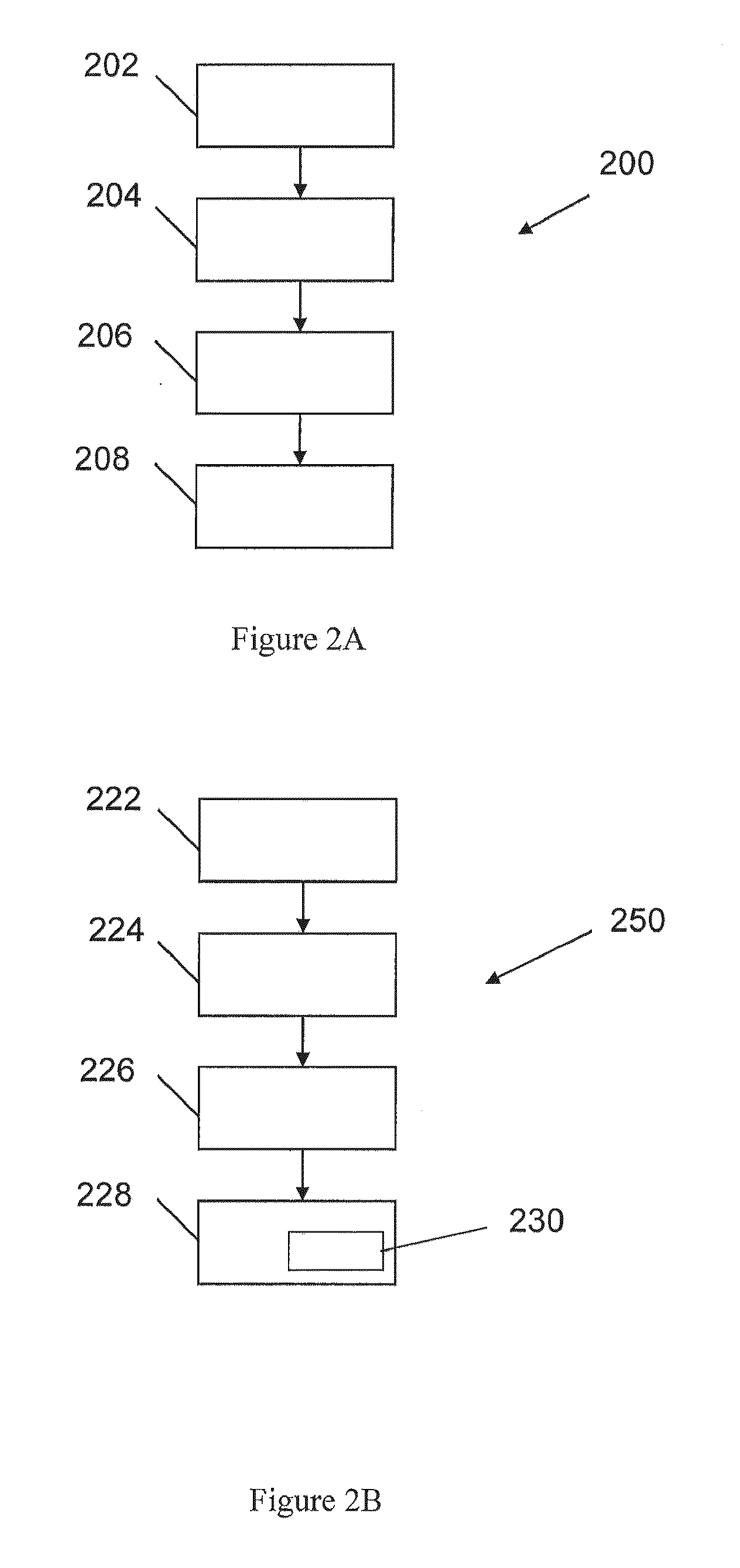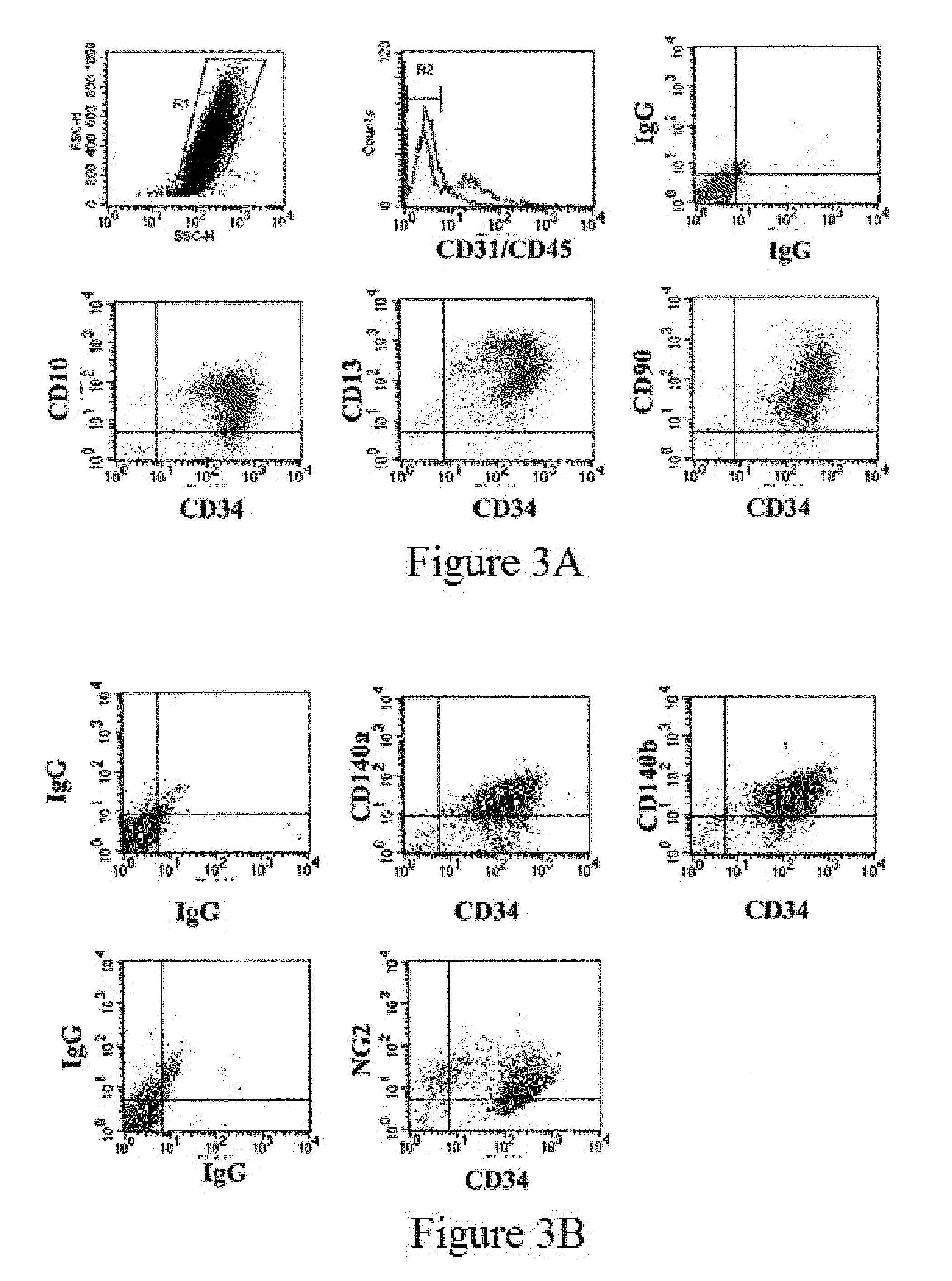Compositions and methods of treatment with stem cells
- Summary
- Abstract
- Description
- Claims
- Application Information
AI Technical Summary
Benefits of technology
Problems solved by technology
Method used
Image
Examples
example 1
[0071]A majority of human ASCs (hASCs) isolated as described Zuk et al. and additionally enriched by attachment to tissue culture plastic, express the stem cell marker CD34 (in the first days of culture), as well as co-express several mesenchymal cell markers (CD10+ / CD13+ / CD90+) and pericyte markers (CD140a+ / CD140b+ / NG2+) (FIG. 3). Determination of these cell markers was conducted two days post-attachment to plastic by flow cytometric analysis of ASCs for co-expression of CD34 with mesenchymal (A) and pericyte markers (B). Analysis was performed for CD34 (APC), CD45 (FITC), CD10 (PE) and CD13 (PE) and CD90 (PE), CD140a (PE), and CD140b.
[0072]Following the identification of ASC markers, the location of ASC in adipose tissue was determined in situ by immunochemical staining. Staining for CD34 (FIG. 4) or CD140b (data not shown) revealed that ASC are located in a perivascular position, consistent with many ASC being mural blood vessel cells or pericytes. The histological analysis of hu...
example 2
[0073]To address ASC-EC interactions, endothelial progenitor cells (EPCs) were isolated and expanded from umbilical cord vein blood of healthy newborns. Isolated mononuclear cells (MNC) were cultured on collagen-coated plastic in EGM-2 / 10% FBS. Cells were expanded and utilized up to passage 6, without significant changes in cell morphology, markers, and responses to factor stimuli). Throughout the work presented herein, EPCs derived from cord blood by this technique were used, to maximize consistency.
example 3
[0074]To evaluate the effect of factors secreted by hASCs on ECs, human microvascular ECs (HmVEC) cultured in growth factor-free media were exposed to conditioned media (CM) of hASCs incubated for 72 hours in either normoxic or hypoxic conditions (FIG. 5). A four day exposure of HmVEC to ASC-normoxic and ASC-hypoxic CM resulted in a marked increase in EC viability under conditions of limiting growth factors, with hypoxic medium demonstrating significantly increased activity. Conditioned media was generated from ASCs cultured in basal medium (EBM / 5% FBS) at ambient oxygen (21%) or hypoxia (1%) conditions. The effect of hypoxia was accompanied by induction of both VEGF and HGF (data not shown), consistent with a hypoxia response, likely mediated by HIF-1α and HIF-2α.
[0075]To understand a broader range of factors that could additionally participate in the effect on EC, ASC-normoxic CM (72 hours) was evaluated using RayBio Cytokine Antibody Arrays (RayBiotech Inc). FIG. 6 illustrates th...
PUM
| Property | Measurement | Unit |
|---|---|---|
| Electrical resistance | aaaaa | aaaaa |
| Vascularization | aaaaa | aaaaa |
| Cell growth | aaaaa | aaaaa |
Abstract
Description
Claims
Application Information
 Login to View More
Login to View More - Generate Ideas
- Intellectual Property
- Life Sciences
- Materials
- Tech Scout
- Unparalleled Data Quality
- Higher Quality Content
- 60% Fewer Hallucinations
Browse by: Latest US Patents, China's latest patents, Technical Efficacy Thesaurus, Application Domain, Technology Topic, Popular Technical Reports.
© 2025 PatSnap. All rights reserved.Legal|Privacy policy|Modern Slavery Act Transparency Statement|Sitemap|About US| Contact US: help@patsnap.com



